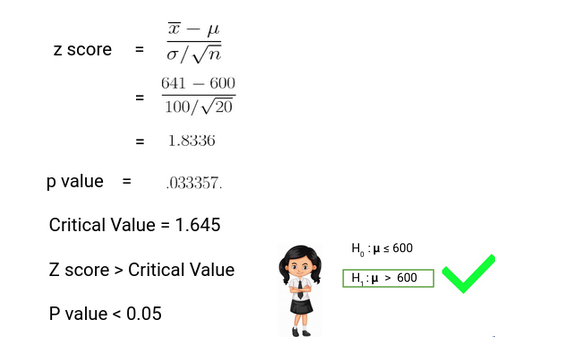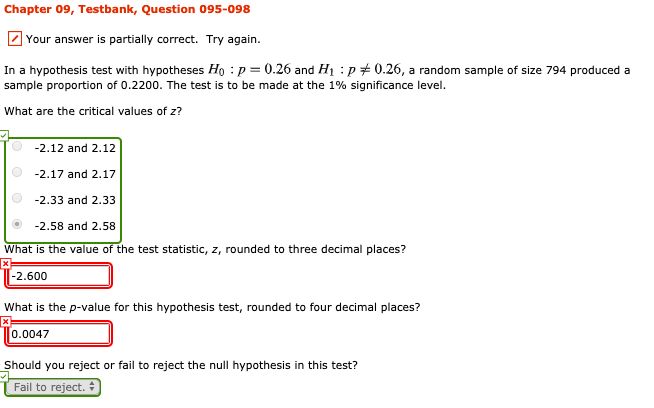

P value of hypothesis test calculator how to#
If your chi-square calculated value is less than the chi-square critical value, then you "fail to reject" your null hypothesis. We have seen how to calculate OLS estimates and evaluate their confidence intervals. Step 4 - Enter the level of significance. Any deviations greater than this level would cause us to reject our hypothesis and assume something other than chance was at play. (See red circle on Fig 5.) If your chi-square calculated value is greater than the chi-square critical value, then you reject your null hypothesis. If the p-value is less than the significance level, we reject the null hypothesis. Step 3: Find the z test value also called test statistic as stated in the above formula. I am not sure of how to calculate the p-value for the above hypothesis in python. Viewed 520 times 0 I want to study the relationship between car accidents and weather temperature. Step 2: Next thing we have to do is that we need to find out the level of significance. Hypothesis Testing and calculating p-value for Pandas dataset. By convention biologists often use the 5.0% value (p<0.05) to determine if observed deviations are significant. For this, Alternate Hypothesis (Ha): Mean < 0. A hypothesis is a claim about a population.


There are 2 videos at the end of Question 1. See Questions 4, 5, and 6, towards the bottom of this page for R scripts to calculate the p-value and a barplot for simple claims about proportions. This means that a chi-square value this large or larger (or differences between expected and observed numbers this great or greater) would occur simply by chance between 25% and 50% of the time. The color of that cell will determine which p-value and confidence interval you will use: 1) To obtain the critical values (cut-off values) for your test, 2) To obtain the test statistic, p-value, and confidence interval, 3) Choose the output which corresponds to your alternative hypothesis. Hypothesis Testing: p-values, Exact Binomial Test, Simple one-sided claims about proportions. In our example, the X 2 value of 1.2335 and degrees of freedom of 1 are associated with a P value of less than 0.50, but greater than 0.25 (Follow blue dotted line and arrows in Fig 5). If P-value is less than (or equal to), then null hypothesis is. This will tell us the probability that the deviations (between what we expected to see and what we actually saw) are due to chance alone and our hypothesis or model can be supported. Calculate two tailed and one tailed p values with the given t test and degree of. The calculated value of X 2 from our results can be compared to the values in the table aligned with the specific degrees of freedom we have. In this case the degrees of freedom = 1 because we have 2 phenotype classes: resistant and susceptible. Degrees of freedom is simply the number of classes that can vary independently minus one, (n-1). Statisticians calculate certain possibilities of occurrence (P values) for a X 2 value depending on degrees of freedom.


 0 kommentar(er)
0 kommentar(er)
